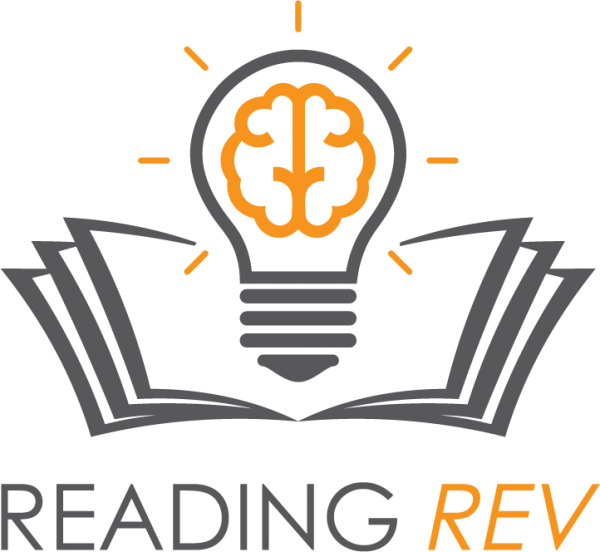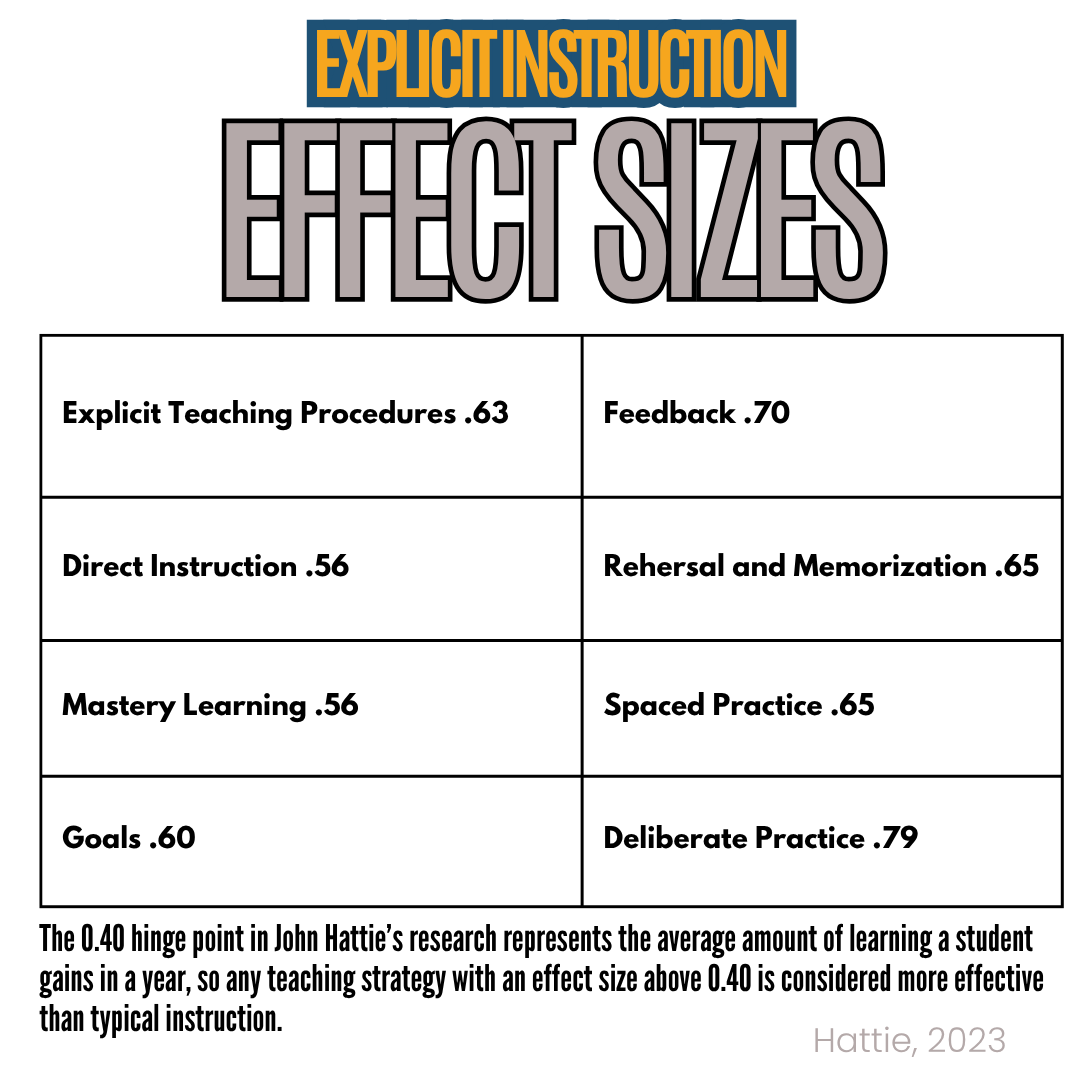Why Explicit Instruction Works: The Science of Learning
I was lucky enough to start my teaching career (back in 2003 😬) at a school who cherished/ required explicit instruction before explicit instruction was cool. I was 24 years-old when asked in my first interview, “Should teachers be a guide on the side or the sage on the stage?” I honestly had no idea what that meant and can’t remember my answer. I’m sure it wasn’t brilliant.
I got the job.
Last week, I was honored to spend an entire week with the queen of explicit instruction… DR. ANITA ARCHER! I attended her Train the Trainers Explicit Instruction Academy. It was everything I hoped and more. Dr. Archer so graciously shared her materials, slides, research, and quotes and said we could go forth into the world and share with everyone we could. I am taking that to heart.
This blog series and accompanying resources are inspired from that training.
What exactly is the Science of Learning?
The science of learning refers to the interdisciplinary study of how people acquire, retain, and apply knowledge. It combines research from cognitive science, psychology, neuroscience, and education to understand the most effective ways to teach and learn. The goal is to use evidence-based strategies to improve instruction and student outcomes.
Let’s talk about the research. How do we know if a practice is effective?
How do we dive into research and understand best practices when we have a thousand other things to do in our day?
Luckily, a ton of research has been done and analyzed that can give educators a road map!
Understanding Effect Size
Effect size is a way to measure the impact of a teaching strategy on student learning. John Hattie, an education researcher, analyzed thousands of studies to determine which strategies have the biggest effect. He found that an effect size of 0.40 represents a typical year of student growth—anything above that has an even greater impact.
Let’s look at research-backed methods of explicit instruction and their effect sizes to see which strategies make the biggest difference for students.
You had me at explicit instruction.
We’ve been hearing a lot about direct, systematic, explicit instruction lately. To give you a little reference, the opposite of explicit instruction is discovery-based teaching or students having control over what they learn. Take a look at these effect sizes:
Discovery-Based Teaching- 0.27
Student Control Over Learning- 0.02
So, to give you explicit instruction in explicit instruction practices, let’s break down Dr. Archer’s 13 Elements of Explicit Instruction.
Critical Content
“Teach the STUFF and Cut the Fluff!” ~ Archerism
Time is limited, so every academic moment counts. Structured Literacy is about WHAT to teach—word recognition, handwriting, spelling, comprehension, and composition. Students also need real content: history, science, literature, robust vocabulary— meaningful background knowledge. There’s no time for endless movies and Pinterest-level crafts. We can be developmentally appropriate and have fun while keeping the focus on evidence-based instruction!
Break Down Complex Content
We need to break down complex material into “obtainable chunks.” Providing smaller steps and teaching skills and concepts from simple to complex sets students up for success. It reduces cognitive load and overwhelm. Teach high frequency patterns before obscure. Teach limited new content and then allow students to practice and participate.
Well Designed & Focused Lessons
“How well they teach = How well they learn.” ~ Archerism
“How well they learn = How well I taught.” ~ Archerism
Read those equations again. We can make a lot of excuses, but the truth is, we are the orchestrators of our students’ learning. How well you design and implement your lesson has a direct effect on learning. Teachers collectively working toward a goal, designing lessons, and analyzing those lesson’s results is the single greatest impact on student learning. (Collective Teacher Efficacy- Effect Size 1.34!!)
It’s not just about what we teach, it’s also about HOW we teach!
Clear Learning Goals & Objectives
Begin each lesson with a clear statement of the goals. What should your students know or be able to do by the end? (Goals- Effect Size .60) Think, what is my success criteria for this lesson? How will I know if my students learned what I set out to teach them? Spend time determining this and plan your lesson backward to reach this goal.
Retrieval Review
The opening of your lesson should include 3 parts: grabbing attention, retrieval review, preview of content. Retrieval review is different than a “recap” in which the teacher retells the content of previous lessons. The students will tune out and not benefit much if they aren’t actively engaged Instead, review should be interactive and involve retrieval. This can be student call-backs, writing out previously learned content, guided partner talk, and so much more. Find out more about retrieval practice here. (Retrieval Review- Effect Size 0.46)
I Do
If you are a teacher, you’ve most likely hear I Do, We Do, You Do. This simple phrase was coined by Anita Archer in 1974! The I DO simply means the teacher explicitly explains and demonstrates the skill or concept while thinking aloud, ensuring students understand the process. It reduces cognitive load by providing clear explanations and worked examples before requiring students to engage in problem-solving independently.
We Do
The We Do is when the teacher and students practice together, with the teacher providing support, scaffolding, and feedback. As the practice goes on, the teacher should gradually release the scaffolds and the students should take more of the learning ownership. This guided practice ensures that students are practicing the skill or learning the concept correctly. It allows them to practice with immediate feedback, reinforcing correct responses and addressing misconceptions before they become ingrained (Hattie, 2009).You should ensure your students have solid understanding before releasing them to work independently.
You Do
In the final stage, You Do, students apply the skill independently, demonstrating mastery while the teacher monitors and provides feedback as needed. This gradual release of responsibility model ensures students develop automaticity and confidence by applying skills independently. Independent practice solidifies learning and promotes long-term retention, especially when paired with spaced repetition and retrieval practice (Pashler et al., 2007).
Frequent Responses
“Learning is not a spectator sport!”~ Archerism
“Every day, in every class, every student participates by speaking, writing, or doing.” ~ Archerism
“Everyone does everything!” ~ Archerism
It is vital that you frequently elicit responses from students. Research results has shown the students who are expected to engage in learning in a variety of ways and throughout the lesson have: increased time on task, increased learning, decreased disruptive behaviors, and increased intensity of interventions. These responses can be: verbal responses, written responses, action responses, hold-ups, inclusive passage reading, and partner talk.
Want to see how often your students are responding? Videotape a lesson that is routine for you and your students. Then, go back and watch it keeping tally marks for every time you elicit a response from your students. If students are raising their hands and you are calling on one student at a time, you’re getting one active engagement. You should have all your students engaged! The goal is 8-12 times per minute depending on the lesson.
Monitor Student Performance
“Walk around. Look Around. Talk Around.” ~ Archerism
I know we have all been guilty of teaching a lesson and as soon as students begin independent work, we rush to check email, grade papers, or just take a breath! Of course, we can’t expect to be “on” every second, but the more we monitor and engage with our students, the more they will LEARN! The feedback loop is powerful. Actively monitoring in the moment is step one.
Provide Immediate Feedback
“Feedback feeds forward!”~ Archerism
The feedback loop in education refers to the continuous cycle of providing students with input on their performance, allowing them to adjust and improve their learning. Effective feedback is timely, specific, and actionable, guiding students toward mastery.
How It Works:
Student Response – The student attempts a task or demonstrates understanding.
Teacher Feedback – The teacher provides corrective, formative, or reinforcing feedback based on student performance.
Student Adjustment – The student uses the feedback to refine their understanding or approach.
Reassessment – The process repeats, ensuring continuous improvement.
Research shows that feedback is one of the most powerful influences on learning.
Praise. Encourage. Correct.
(Effective Feedback- Effect Size 0.73)
Brisk Pace
“Perky not Pokey.” ~ Archerism
“Avoid the void for they will fill it.”~ Archerism
Delivering a lesson at a brisk pace keeps engagement and momentum going. If there is a lull in the lesson, students will begin chatting and get off task. Of course, this is a balance. We don’t want to rush so much that our lessons feel frantic and students feel stressed trying to keep up. These are ways to maintain a brisk pace:
prepare for the lesson
use instructional routines
when you get a response, move on
avoid verbosity
avoid digressions
Judicious Practice
“Perfected practice over time makes perfect and permanent.” ~ Archerism
Let’s define three kinds of practice:
Deliberate Practice is goal-oriented with the goal of improving a skill (Effect size 0.79)
Retrieval Practice is a strategy in which students must retrieve information from memory (Effect size 0.74)
Spaced Practice is sometimes called distributed practice and is when student practice is broken up into many short sessions and spaced over a longer period of time (Effect size 0.60)
Not all practice is created equal. Focus on moving information from students’ short term memory to their long term memory! Learn more about the “right” kind of practice here.
Orchestrate Learning Magic
Teaching with intention means prioritizing evidence-based instruction over fluff. Every moment in the classroom should move students closer to mastery—through clear instruction, active engagement, frequent feedback, and purposeful practice. When we teach the STUFF and cut the fluff, we give students the tools they need to thrive.
Next time, we’ll break down the foundational principles of the science of learning, exploring how the brain acquires, retains, and applies knowledge. Stay tuned!
Find our Editable 13 Elements of Explicit Instruction Planning Guide inside our VIP Vault.
Get your free Archerism poster here.
References:
Archer, A. & Hughes, C. (2011). Explicit Instruction: Effective and Efficient Teaching . NY: Guildford Publications.
Agarwal, P. K., & Bain, P. M. (2019). Powerful teaching: Unleash the science of learning. Jossey-Bass.








